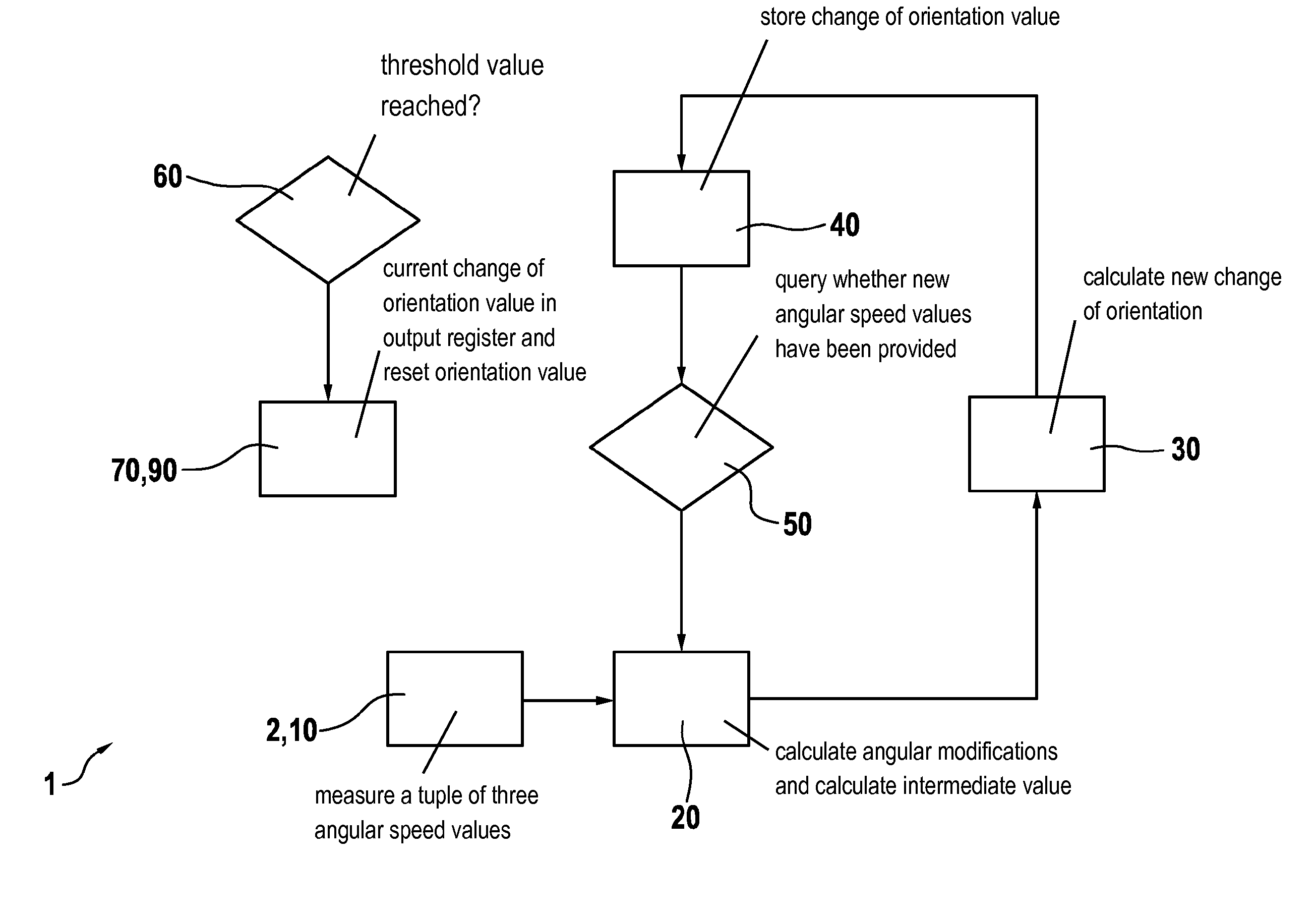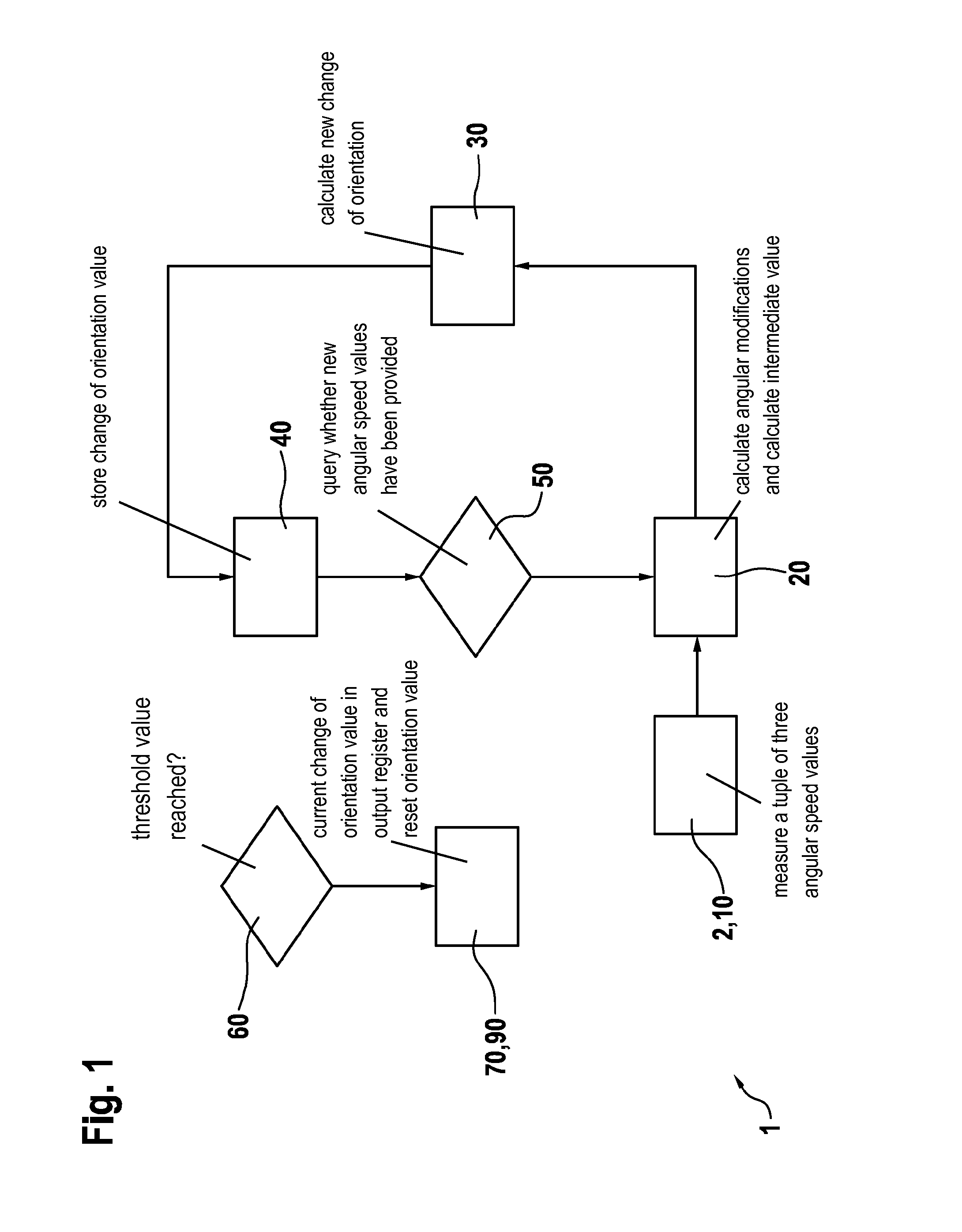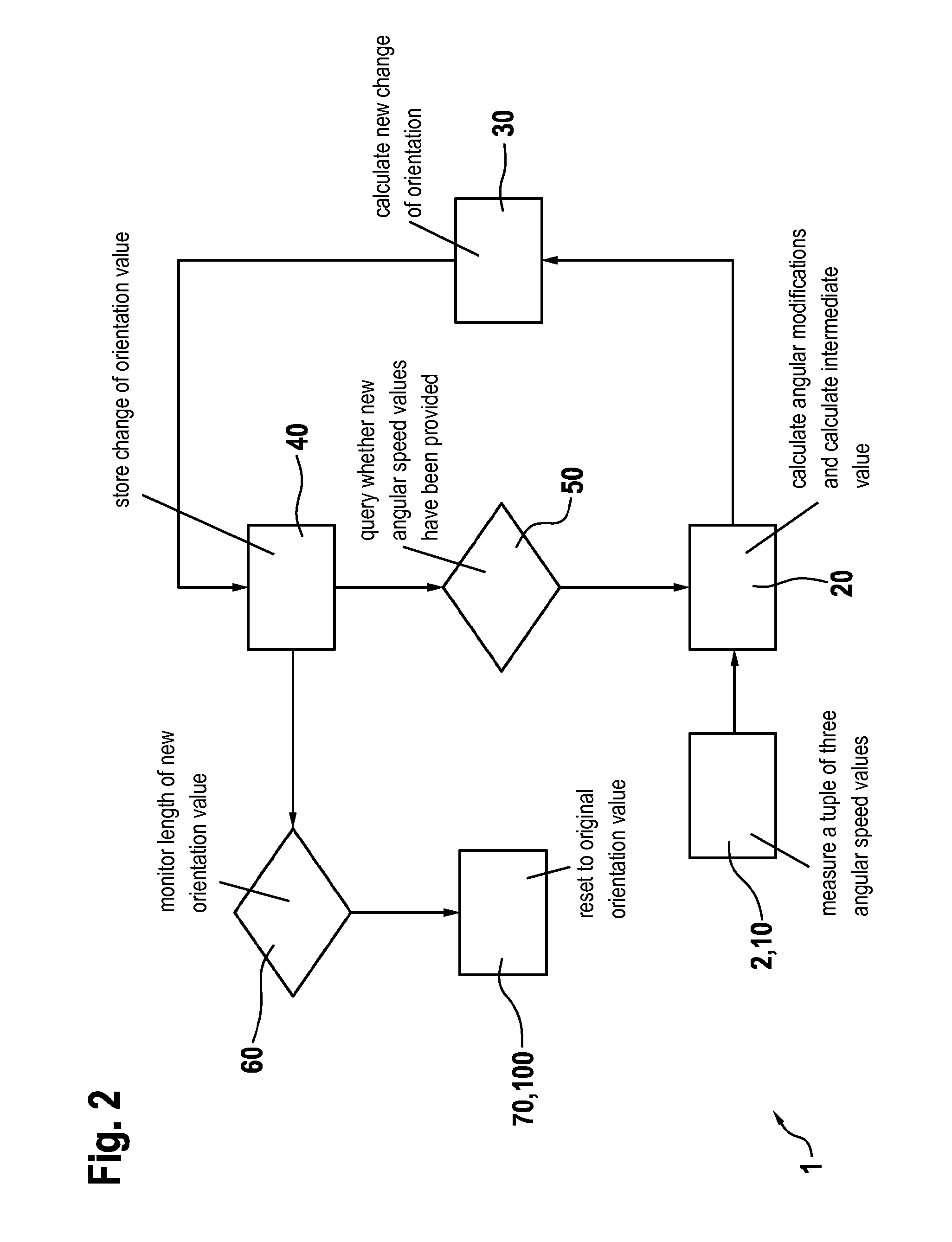Method for evaluating output signals of a rotational rate sensor unit and rotational rate sensor unit
a technology of rotational rate sensor and output signal, which is applied in the direction of acceleration measurement using interia forces, navigation instruments, instruments, etc., can solve the problems of reducing the battery running time comparatively high power consumption, and the main processor of the portable device, so as to achieve substantially reduced power consumption, data transfer, and energy consumption. , the effect of reducing the battery running tim
- Summary
- Abstract
- Description
- Claims
- Application Information
AI Technical Summary
Benefits of technology
Problems solved by technology
Method used
Image
Examples
Embodiment Construction
[0024]In the various Figures, identical parts are provided with identical reference characters, and are therefore in general only named or mentioned once.
[0025]FIG. 1 shows a schematic view of a method for evaluating output signals of a rotational rate sensor unit 1 according to a first specific embodiment of the present invention. Rotational rate sensor unit 1 has a rotational rate sensor that measures rotational rates or angular speeds ωx, ωy, ωz about an X-axis, a Y-axis, and a Z-axis, the X, Y, and Z axes being independent of one another.
[0026]In a first method step 10, a tuple of three angular speed values ωx, ωx, and ωx is measured by the rotational rate sensor and provided. In a second method step 20, from the three angular speed values ωx, ωx, and ωx, and using sampling time T (which corresponds to 1 / data rate), respective angular modifications ωx·T, ωy·T and ωz·T are calculated. As a function of angular modification ωx·T, ωy·T, ωz·T, an intermediate value q· is then calcula...
PUM
 Login to View More
Login to View More Abstract
Description
Claims
Application Information
 Login to View More
Login to View More - R&D
- Intellectual Property
- Life Sciences
- Materials
- Tech Scout
- Unparalleled Data Quality
- Higher Quality Content
- 60% Fewer Hallucinations
Browse by: Latest US Patents, China's latest patents, Technical Efficacy Thesaurus, Application Domain, Technology Topic, Popular Technical Reports.
© 2025 PatSnap. All rights reserved.Legal|Privacy policy|Modern Slavery Act Transparency Statement|Sitemap|About US| Contact US: help@patsnap.com



